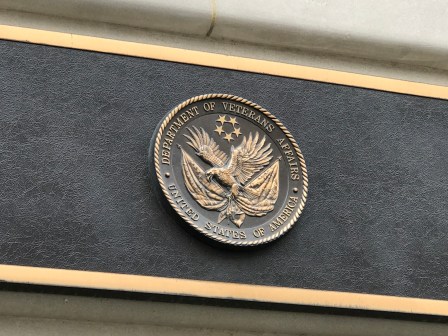Powerhouse digital service team taking shape at VA
Eight months into its effort to recruit technology developers to help it tackle one of the largest reform efforts in government, the Department of Veterans Affairs has managed to attract some distinguished technologists from the private sector to form the backbone of its new digital service team.
The VA has struggled to keep critical technology leadership positions staffed during the last year in the aftermath of a nationwide scandal involving the manipulation of patient scheduling. But with renewed support from VA Secretary Robert McDonald, who has spearheaded the biggest reorganization in VA’s 84-year history, and more than $100 million in the president’s 2016 budget proposal to form digital teams across government, VA has managed to create a core team of experts who will likely grow to be the largest digital service team in government.
VA’s digital service hiring target for this year is 25. So far, the agency has hired nine digital service experts who report to the team’s Chief Technology Officer Marina Martin, the senior adviser to White House CTO Megan Smith. The agency actually had 10 DSEs on staff since February, when Google loaned the agency Ted Behling, a specialist in Linux clusters, for a three-month assignment. Behling has since returned to the company. By the end of 2016, VA plans to have more than 75 DSEs on staff.
“The goal is to keep building on it,” Chief Information Officer Stephen Warren said in a conference call Tuesday with reporters. “Ultimately, there was a notional number of 100, given the size of VA.” But that number is easier said then done, he acknowledged. “We’ve been at this for a good [six to eight months]. The skill set that we’re looking for is not a skill set that is widely available,” he said. “We got a couple of key people we were able to pick off because we were early. We’ve got some really great stars.”

(VA)
VA’s DS team
Although Behling may have returned to Google, VA’s digital service team is off to a strong start.
Ellen Ratajak came out of retirement as Amazon’s former director of IT to join the VA team. While at Amazon, Ratajak was responsible for developing the company’s automated fulfillment center software. She also worked on software supporting the company’s customer service and is the patent holder for the software that powers Amazon.com’s associates program.
The VA DS team also counts Alex Gaynor, president of the Python Software Foundation, in its ranks. An expert in distributed systems, Gaynor is also a former software developer for Rackspace.
Matthew Weaver, whose official title is rogue leader of the digital service team at VA, is a Python and C++ expert best known as the former Google site ecologist who spent 54 weeks living in a trailer in the parking lot of Google’s Mountain View, California, campus.
Other members of the VA digital service team include: Craig Harrington, a health informatics and electronic health record usability expert from the University of Texas at Houston; Shawn Arnwine, an architecture specialist from the Social Security Administration; Emily Wright Moore, a user experience design and front-end development expert who’s worked at Twilio and Code for America; Jeff Maher, a software developer who worked at Johnson & Johnson; Kavi Harshawat, a Code for America fellow who also worked for Google as the mobile and desktop design lead; and Emily Tavoulareas, a senior digital adviser at the VA Center for Innovation.

(VA)
Founding member focus
According to Warren, the founding members of the VA’s digital service team will be spending the bulk of their time focusing on improving the digital experience for veterans seeking care and benefits. That effort is embodied in the agency’s work on the MyVA initiative, which seeks to collapse the multitude of VA websites into a single, unified website for veterans.
The team presented Warren a demo of the website redesign last week, which he described as “pretty spectacular.”
The team’s second focus has been providing assistance on back-end coding in support of the disability evaluation process.
“We’ve also started an engagement looking at the appeals process — how can we leverage what [the Veterans Benefits Management System] has accomplished, such that we can now start applying some of that technology to the appeals efforts,” Warren said. The VA requested $20 million in its latest budget request to support this work.
Warren recently had the new team members attend VA’s developer conference to more closely align the digital services efforts with existing VA IT programs. “We need to embed them and make them a part of our other work that’s taking place and making sure the knowledge that they’re bringing to the table … how do we take advantage of that as we continue to evolve major systems at VA,” Warren said. “I tried very, very hard to make sure it’s not an us and them. They are part of the team, we look at them as a resource.”
One of Warren’s main concerns is to avoid a management style he referred to as “management by seagulls” — where leaders arrive, make a lot of noise and then simply “crap all over the place and … leave,” Warren said. “The DST folks are not seagulls. They’re coming in, they’re making long-term change, they’re owning those changes and we, as a team, are supporting those changes going forward.”

(VA)






